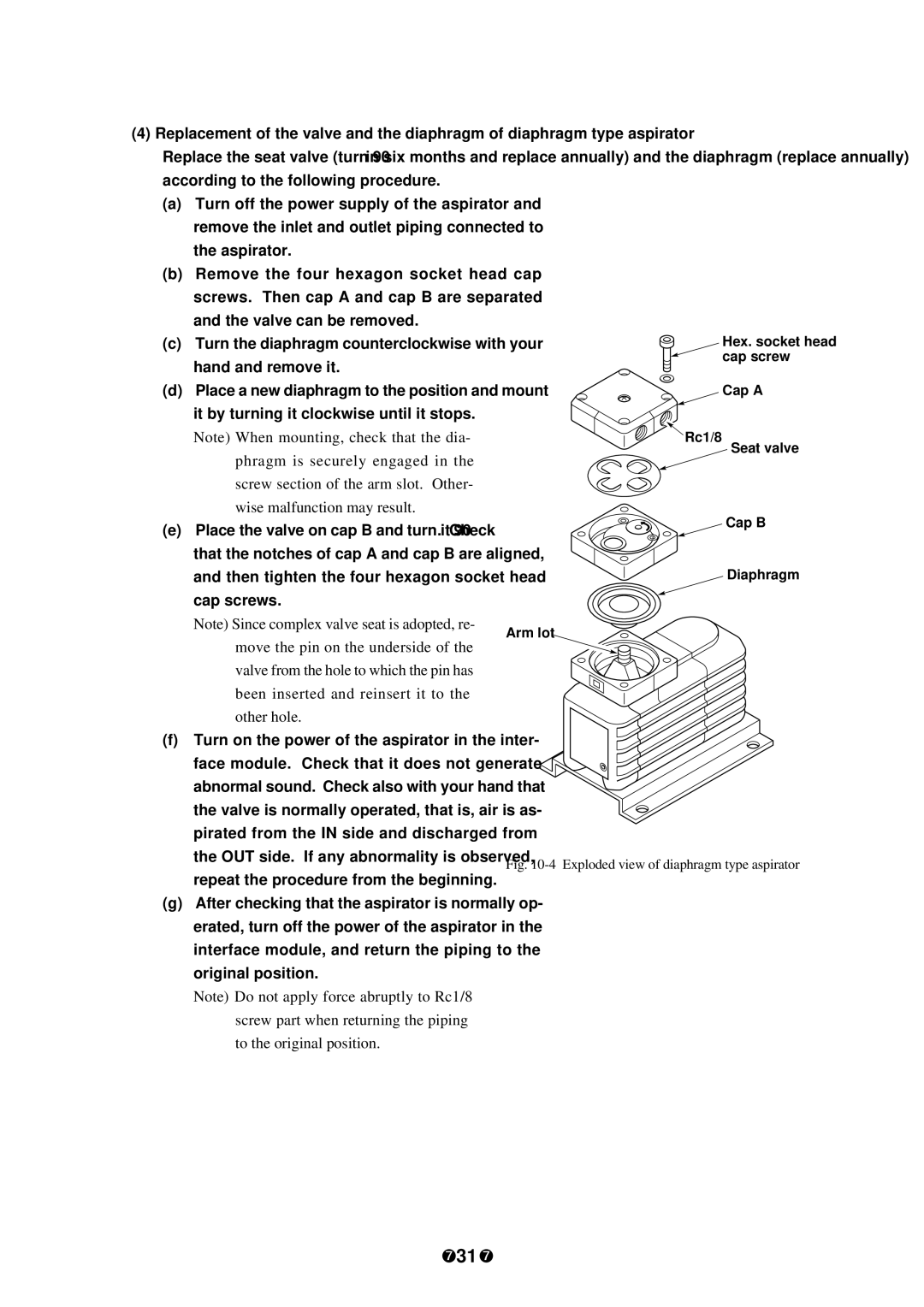
(4) Replacement of the valve and the diaphragm of diaphragm type aspirator
Replace the seat valve (turn 90° in six months and replace annually) and the diaphragm (replace annually) according to the following procedure.
(a)Turn off the power supply of the aspirator and remove the inlet and outlet piping connected to the aspirator.
(b)Remove the four hexagon socket head cap screws. Then cap A and cap B are separated and the valve can be removed.
(c) Turn the diaphragm counterclockwise with your hand and remove it.
(d) Place a new diaphragm to the position and mount it by turning it clockwise until it stops.
Note) When mounting, check that the dia- phragm is securely engaged in the screw section of the arm slot. Other- wise malfunction may result.
(e)Place the valve on cap B and turn it 90∞ . Check that the notches of cap A and cap B are aligned, and then tighten the four hexagon socket head cap screws.
Note) Since complex valve seat is adopted, re- move the pin on the underside of the valve from the hole to which the pin has been inserted and reinsert it to the other hole.
(f)Turn on the power of the aspirator in the inter- face module. Check that it does not generate abnormal sound. Check also with your hand that the valve is normally operated, that is, air is as- pirated from the IN side and discharged from the OUT side. If any abnormality is observed, repeat the procedure from the beginning.
(g)After checking that the aspirator is normally op- erated, turn off the power of the aspirator in the interface module, and return the piping to the original position.
Note) Do not apply force abruptly to Rc1/8 screw part when returning the piping to the original position.
Rc1/8
Cap B
Diaphragm
Arm lot
Fig. 10-4 Exploded view of diaphragm type aspirator
– 31 –
